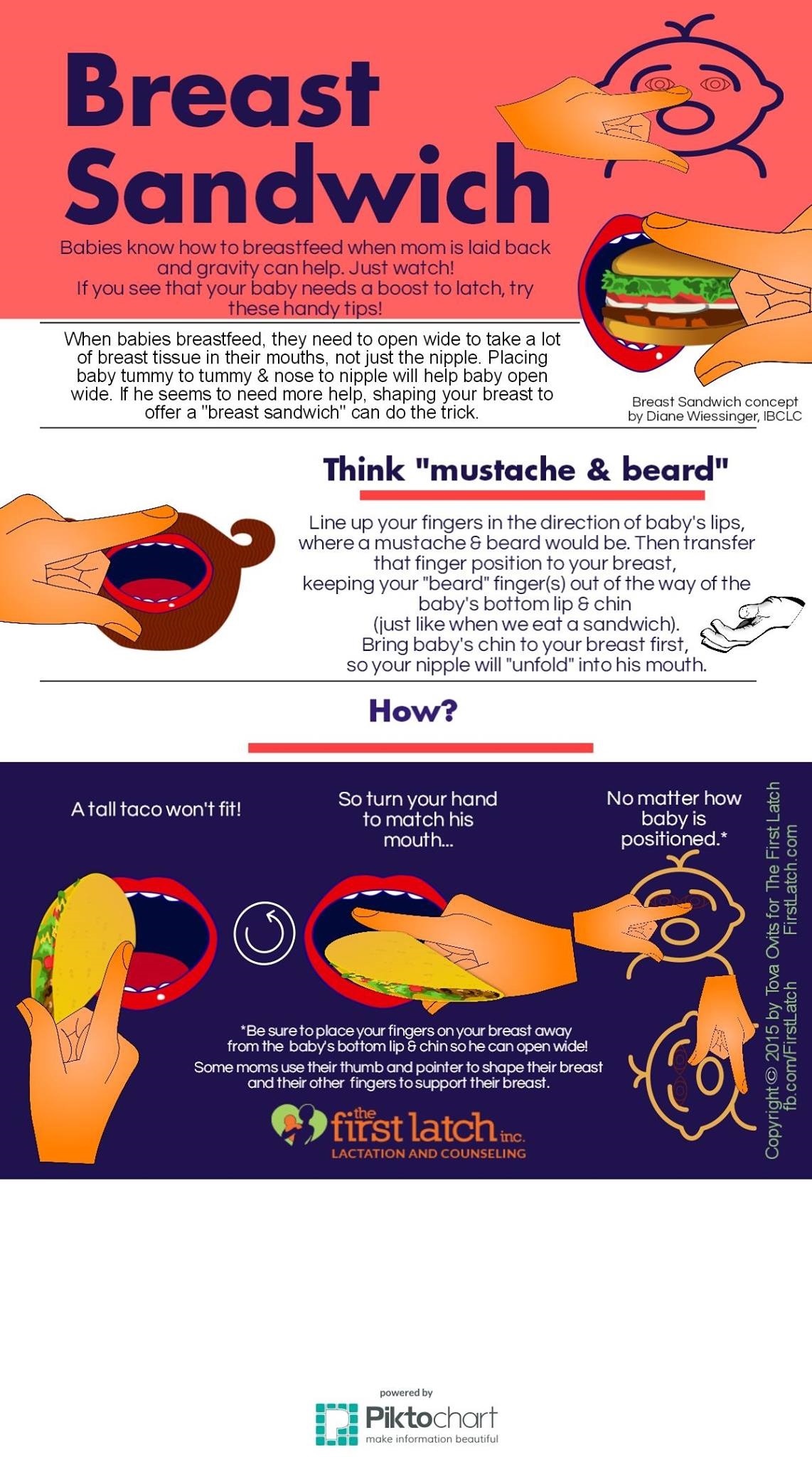Handy Latching Tips
Did you know that when babies are placed tummy down on mom’s chest while she’s laid back comfortably, gravity helps them latch? It’s amazing to watch!
For baby-led latching, get comfortable and follow your baby’s lead and your instincts.
Are you leaning back so that gravity holds your baby on your body? Picture the way you collapse on the couch after a long day: your neck, back, and shoulders are comfortably supported, and your bottom is close to the edge of the seat so you’re leaning back but not lying down. When you’re comfortable, you’re literally “laid back” and relaxed, so your hormones can flow!
Is baby’s tummy against your body? That position triggers nursing instincts! He can be across your body or down your leg, or even crouching next to you, but he shouldn’t have to turn his head to latch. (Try turning your head to look over your shoulder and opening your mouth now and you’ll see why: It’s not comfortable to stay in that position!)
Is baby lined up nose to your nipple? That helps him open wide, because he has to look up to reach and have more room for an open mouth…just like when we tilt our heads back to take a drink.
Are your baby’s feet supported? When we’re on a high stool that doesn’t let our feet reach the floor, it’s hard to eat unless we put our feet on the rungs below the seat, or on the table leg, or even sit on one leg! Babies also need positional stability to nurse, so putting your arm, leg, or even a couch pillow under his feet can help him get organized.
Are your baby’s hands hugging your breast? He uses his hands to find your nipple and might even grab your nipple and suck his hand before latching if you give him a chance and watch patiently. If he’s stuck in a loop, move him so his cheek touches your breast to “restart” the search.
If you see your baby needs more help getting that big, deep mouthful of breast (it’s called “breastfeeding,” not “nipple feeding,” for a reason!), try offering a “breast sandwich.”
How do we eat a sandwich? We don’t think about it, just naturally line up the sandwich and our lips, and give a little squeeze to shape the sandwich to fit into our mouths because we want to take a bite, not nibble the crust. And we make sure that our thumbs, under the sandwich, aren’t in the way and won’t get bitten!
When you’re comfortable, with baby’s tummy against your body, he can be draped across your body or even down your leg.
To make the sandwich, line up your fingers with your baby’s lips (think of a mustache & beard) and transfer that position to your breast, to make sure you’re offering a wide mouthful of burger, not a tall taco. Your fingers will be parallel with your baby’s lips. That means if baby is across your body, his lips (and therefore your fingers) will be on the sides of your breast; if he’s down your body, his lips (and your fingers) will be on the top & bottom of your breast.
Make sure that your “beard” finger(s) aren’t blocking the baby’s bottom lip or chin from opening his mouth widely. He needs to get your nipple far back in his mouth, into the “comfort zone” past the ridges on the roof of his mouth. That mouthful of breast lets him avoid nibbling the “crust” — your nipple.
Some mothers find they’re comfortable with their thumb on top of the sandwich and their fingers far back from the bottom lip, available to support their breast, with pinky toward their ribs. Other mothers put their thumb on bottom, pinky toward baby, and perhaps curl their fingers so they can see baby’s face. Use whatever direction is comfortable for you!
Bring baby’s chin to the “underside” of your breast; your nipple will “unfold” deep in his mouth.
Once the baby is sucking rhythmically, you can try releasing your breast sandwich. If your breast slips out of baby’s mouth, you can support it again.
Follow his cues, and he’ll let you know if he needs a hand!


